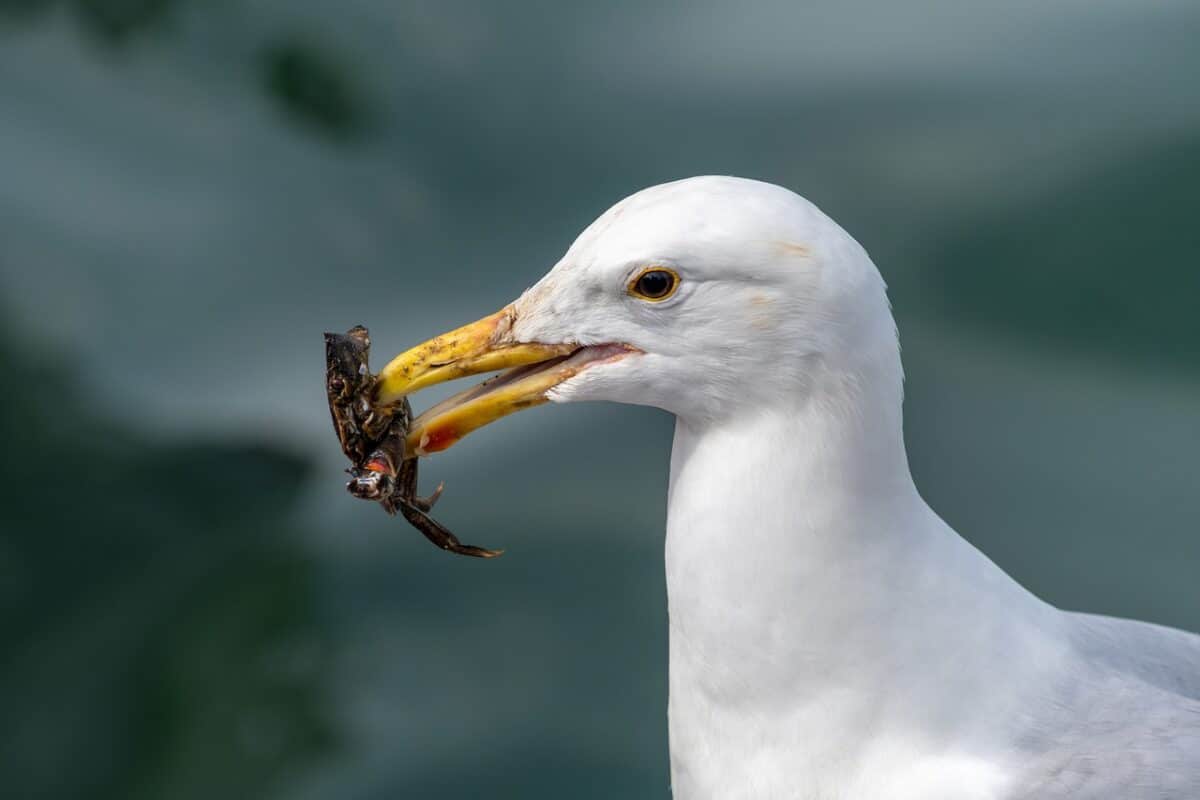U.K. Seagulls Steal Drugs and Get High

Seagulls, widely despised for their audacious behavior, have taken their antics to a new level in the United Kingdom. Reports suggest that they are now stealing a synthetic marijuana called ‘spice’ from people. This trend has raised concerns due to the seagulls’ erratic behavior after encountering the drug, including dive-bombing pedestrians. Additionally, seagulls can transmit diseases to humans through contact or droppings. Studies indicate that these birds closely observe human food choices and prefer items consumed by people nearby. Explore the intriguing world of these feathered kleptomaniacs with us!
Seagulls Steal Drugs: Unusual Behavior Raises Concerns in the UK

Seagulls in the United Kingdom have been observed snatching a synthetic marijuana called ‘spice’ from people, surprising witnesses in coastal towns like Hastings, East Sussex, Margate, Kent, and Essex, as well as major cities including London, Leeds, Manchester, and Liverpool.
These scavenging birds swoop down and grab the drug, then fly away with it. Concerns have been raised about the effects of spice on seagulls, who have been exhibiting unusual behavior such as dive-bombing pedestrians and collapsing. The situation highlights the potential impact of drug use on wildlife and the environment, prompting ongoing investigations into these incidents.
Are Seagulls Harmful?

Seagulls can pose a potential threat to humans, particularly when they feel threatened or are protecting their young. During the breeding season, they can exhibit heightened aggression.
However, it’s important to note that not all seagulls are dangerous. Most of the time, they are simply searching for food. Unusual incidents in the UK involving seagulls stealing drugs and behaving erratically do not represent typical seagull behavior.
In general, seagulls do not harm humans unless provoked. They serve an important role in the coastal ecosystem and contribute to maintaining the balance of nature.
Respecting their space and refraining from feeding them is always advisable, as this can lead to dependency and aggressive behavior.
New Research: Seagulls Seek Guidance from Humans Regarding their Food Preferences

A recent study has revealed that seagulls, especially European herring gulls, closely observe the dietary choices of humans around them. These birds display a strong inclination towards consuming the same food items as people in their vicinity.
To investigate this behavior, researchers conducted an experiment on Brighton beachfront. They presented seagulls with blue and green packets of potato crisps while an observer either passively watched or actively consumed crisps from a green or blue packet.
The results showed that 48% of the seagulls approached the crisp packets when the observer was eating, in contrast to 19% when they were not. Moreover, when the birds pecked at a packet, they chose the same color as the observer’s packet in 95% of instances.
This finding could potentially explain incidents where seagulls have stolen drugs. It is possible that the birds observed humans consuming these substances and, mistaking them for food, decided to snatch them.
Potential Diseases Transmitted by Seagulls

Seagulls have the potential to spread diseases, posing a threat to humans. Similar to other birds, seagulls can carry and transmit various diseases, primarily through their droppings or direct contact. These illnesses can lead to a range of symptoms and are particularly dangerous for individuals with weakened immune systems.
- Salmonellosis: This bacterial infection causes fever, diarrhea, and abdominal cramps. The most common mode of transmission is through contaminated food or water.
- Campylobacteriosis: Another bacterial infection that presents symptoms akin to salmonellosis. It is often contracted from undercooked poultry, unpasteurized milk, or contaminated water.
- E. coli: This bacterium induces severe stomach cramps, diarrhea, and vomiting. Contaminated food or water is the usual source of transmission.
- Cryptococcosis: A fungal disease that can result in pneumonia and brain swelling. Inhaling the fungus present in bird droppings can transfer the infection to humans.
- Avian Influenza (Bird Flu): This viral infection causes fever, cough, sore throat, and muscle aches. Direct contact with infected birds or their droppings can lead to transmission.
Frequently Asked Questions About Seagulls

What is the diet of seagulls? Seagulls have a diverse diet as omnivores. They commonly consume fish, insects, earthworms, rodents, and other small birds. Additionally, they often scavenge on human food waste.
What sets seagulls apart from gulls? “Seagull” is a term used colloquially to refer to any gull. In reality, there are numerous gull species, not all of which inhabit coastal areas. Thus, the more accurate term to encompass all gulls is simply “gull.”
How large is the brain of a seagull? The size of a seagull’s brain varies across species but tends to be relatively small compared to their body size. Despite this, gulls exhibit complex behaviors and possess learning abilities, indicating intelligence despite their small brain size.
Conclusion: Seagulls’ Drug Theft Highlights their Adaptability
The recent phenomenon of seagulls in the United Kingdom stealing drugs may be concerning, but it also showcases their intelligence and ability to adapt.
Urban seagulls have successfully adjusted their diet to include human leftovers. They are so bold that they will even snatch food directly from our hands, as evident from the incidents involving drug theft.
These occurrences serve as a reminder of the intricate relationship between humans and wildlife, and the unforeseen consequences that may arise from our actions. As we coexist with these birds in urban environments, it is crucial to comprehend and respect their behaviors while working towards minimizing any potential harm.